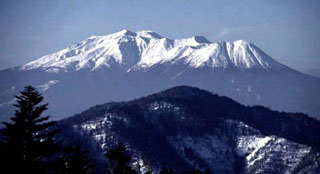Report on Ontakesan (Japan) — 1 October-7 October 2014
Smithsonian Institution / US Geological Survey
Weekly Volcanic Activity Report, 1 October-7 October 2014
Managing Editor: Sally Sennert.
Please cite this report as:
Global Volcanism Program, 2014. Report on Ontakesan (Japan) (Sennert, S, ed.). Weekly Volcanic Activity Report, 1 October-7 October 2014. Smithsonian Institution and US Geological Survey.
Ontakesan
Japan
35.893°N, 137.48°E; summit elev. 3067 m
All times are local (unless otherwise noted)
JMA reported that ash emissions from Ontakesan likely continued during 1-7 October. The plume height could not be determined due to poor visibility although on 7 October observers noted that the plume rose 300 m above the crater rim and drifted E. Seismic levels fluctuated; tremor continued to be detected. A news article from 8 October noted that the number of people killed in the 27 September eruption had reached 55; nine were still missing. The Alert Level remained at 3 (on a scale of 1-5).
Geological Summary. The massive Ontakesan stratovolcano, the second highest volcano in Japan, lies at the southern end of the Northern Japan Alps. Ascending this volcano is one of the major objects of religious pilgrimage in central Japan. It is constructed within a largely buried 4 x 5 km caldera and occupies the southern end of the Norikura volcanic zone, which extends northward to Yakedake volcano. The older volcanic complex consisted of at least four major stratovolcanoes constructed from about 680,000 to about 420,000 years ago, after which Ontakesan was inactive for more than 300,000 years. The broad, elongated summit of the younger edifice is cut by a series of small explosion craters along a NNE-trending line. Several phreatic eruptions post-date the roughly 7300-year-old Akahoya tephra from Kikai caldera. The first historical eruption took place in 1979 from fissures near the summit. A non-eruptive landslide in 1984 produced a debris avalanche and lahar that swept down valleys south and east of the volcano. Very minor phreatic activity caused a dusting of ash near the summit in 1991 and 2007. A significant phreatic explosion in September 2014, when a large number of hikers were at or near the summit, resulted in many fatalities.
Sources: Japan Meteorological Agency (JMA), RIA Novosti

